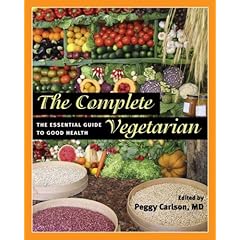
Want to eat cheaply yet healthfully? Vegan is the way to go.
Vegans can still eat on a budget, stay or become healthy, and honor our values; it just takes a little bit of tweaking how we think about grocery shopping and structuring our meals. I’ve compiled several ways we can still eat healthy in our budgets, and how we can overcome some challenges of rising food costs.
Of course, no one approach fits all. It all comes down to tradeoffs. If your weekly sushi habit is non-negotiable, so be it. Feel free to pick and choose from these tips and maybe save a few dollars so you can still splurge with good conscience on the things you’d rather not sacrifice.
Perhaps one reason so many people think it costs so much to be a healthy vegan is because food items labeled “vegan” tend to be pricey. And this is true for things like frozen meals, soy cheese, faux meats, many ready-to-eat breakfast cereals, snacks and desserts, fancy sauces, and prepared delicacies. But these foods are to be used more as condiments and sides, not as the main fare. Used that way, our diet is no more expensive than the average person’s; it is in fact less so. The healthiest diets are the most simple: they are based on whole grains, legumes (beans, lentils, nuts, and seeds), fruits, and vegetables. And we don’t need a “vegan” label for those!
Regardless of price tags, foods that make up the Standard American Diet (SAD) are really the most expensive of all. This is because the SAD threatens our well-being and promotes chronic disease. So if we’re really going to analyze the cost of our diets, consider the cost over years of eating a poor diet. Medical care, lost work time, and chronic illness cost our country billions of dollars annually, not to mention pain and suffering, which of course have no price tag.
Whether you shop at Whole Foods or Wal Mart, you can make smart choices that will save you money:
Stick to a list. The point is to shop with a plan rather than impulsively.
Compare not only item prices, but unit prices (prices for the same quantity).
Keep a running total as you shop.
Never shop hungry. Trust me.
Clip or print coupons, but only for things you’re planning to buy.
In the produce section, choose fresh/whole over the pre-washed bagged stuff.
Fruits and veggies are not as pricey as you think (unless you include organic, out-of-season, and specialty items). According to a study by the Economic Research Service of the USDA in 2008, a person needing 2000 calories a day could meet their fruit and vegetable recommendations for less than $2.50 a day (I think we need more than the USDA recommendations, even then it’s still under $5 per day).
In-season fresh produce is almost always cheaper. And consider frozen.
Store brands are OK. Many store brands offer organic choices too.
Buy in Bulk. Flours, whole grains, nuts, seeds, dried fruits, dry beans, and mixes are almost always cheaper in bulk. And you can buy only what you need.
Bypass the mixes. Boxed rice is little more than rice and a seasoning packet. For a quarter of the price, you can buy rice in bulk and add your own seasonings. Baking mixes are nice but you can save a bundle by baking from scratch. Easy recipes for vegan baked goods abound.
Go easy on the snack foods (cookies, chips, nondairy frozen desserts, etc.). Vegan “junk” food is fine on occasion, but regular consumption supports neither optimal health nor a tight budget. Splurge every now and then if you must (set a limit), or make your own using whole grains and minimal sweeteners.
Pass on the “single serving” packs. Trying to control calories? Pre-pack your own (in reusable containers of course).
Skip the warehouse clubs. Why? First of all, your savings (over regular store prices) over the course of a year would need to offset the annual fee. Second, foods like bread, fruit, and vegetables have to be consumed super-fast or else they’ll go to waste (not an issue for huge families or those who buy for others). Third, huge amounts of food in the home encourage overeating.
Start a garden.
Join a CSA (Community Supported Agriculture).
Start your day with hot cereal made from whole grains.
When possible, make your own:
• seitan (all you need is wheat gluten, broth, and seasonings)
• popcorn
• soy milk (from soy beans, water, and optional flavorings)
• soy yogurt (from soy milk)
• sprouts (from fresh legumes and grains)
• nut butters (if you have a good food processor or grinder)
• veggie burgers
• bread (a bread machine is a fantastic investment)
• “energy” bars
• salsa
Focus on one-pot meals.
Be creative with leftovers. Make a wrap with last night’s black beans; use leftover lentil soup as a topper for whole-grain pasta; throw yesterday’s veggies into a tofu scramble.
Save from spoilage. Use what you have; throwing away food is throwing away cash.
Dine out smartly.
For more info on how to be a thrifty vegan, see my upcoming article in Vegetarian Voice.
 Peggy Carlson, MD has compiled the ultimate source on vegetarian nutrition. Check out The Complete Vegetarian: The Essential Guide to Good Health (University of Illinois Press, 2008). Each chapter provides a comprehensive analysis and review on topics most important to vegetarians, including all of the relevant nutrients, common diseases that are affected by diet, vegetarianism in childhood, pregnancy, and lactation, sports nutrition for vegetarians, and vegetarian meal planning.
Peggy Carlson, MD has compiled the ultimate source on vegetarian nutrition. Check out The Complete Vegetarian: The Essential Guide to Good Health (University of Illinois Press, 2008). Each chapter provides a comprehensive analysis and review on topics most important to vegetarians, including all of the relevant nutrients, common diseases that are affected by diet, vegetarianism in childhood, pregnancy, and lactation, sports nutrition for vegetarians, and vegetarian meal planning.







